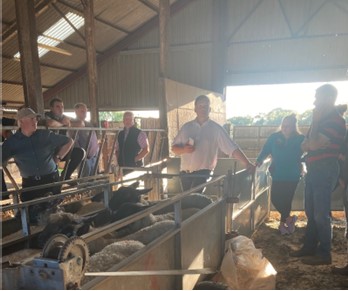Regional Group Round Up
26 October 2023Next Generation Newsletter
This article is produced as a part of the FAS Next Generation Newsletter. Subscribe now to receive the full report in your inbox quarterly.
We travel round the regional groups to hear what they have been up to so far this year. Keep an eye on the FAS events page or contact your regional group facilitator to be kept in touch about upcoming meetings.
North West
By Willie Budge, North West group facilitator
Contact: Willie.Budge@sac.co.uk
There was a timely reminder for attendees at our recent North West New Entrants Group of the “Seasonal changes in Animal Health”. The group was joined by Franz Brülisauer, SRUC Veterinary Services Centre manager and local veterinarian, William Campbell of D S McGregor & Partners, Thurso.
Franz covered the different types of lameness (Scald, CODD, Foot rot, Granuloma and Shelly Hoof) in terms of distinguishing between them, causes and treatment. He also covered the 5-point plan for tackling lameness in sheep which he encouraged attendees to follow:-
- Cull
- Cull any repeat offenders after 2 cases as they will act as a source of infection.
- Avoid
- Aim to use a clean and dry handling system, move troughs regularly.
- Treat
- Treat any lame sheep as soon as possible to try and stop the cycle of infection.
- Quarantine
- Inspect feet of new purchases, segregate for 28 days and consider foot bathing.
- Vaccinate
- Can be used to treat and prevent foot rot.
William Campbell covered a broad range of diseases in cattle and sheep which became prevalent as the seasons change. The main message was to be vigilant as something like liver fluke which has not been a problem so far this year could quickly become a problem depending on changing weather systems. Likewise Nematodirus can now be a problem all year round dependent on environmental factors. He also touched on some of the more exotic diseases which we haven't seen in the far north, but which could in the future become a problem with changing climate.
To finish the day we had an "Ask the Vet" session which was very useful for attendees to bring up concerns they have for their own holdings, this ranged from the risks of taking sheep from a TB area in England to health testing breeding heifers for sale in 2024.
Action Points
- Use the 5-point plan for lameness. https://www.fas.scot/downloads/five-point-plan-tackling-lameness-sheep/
- Stay vigilant
- Isolate new stock.
- Test not Guess
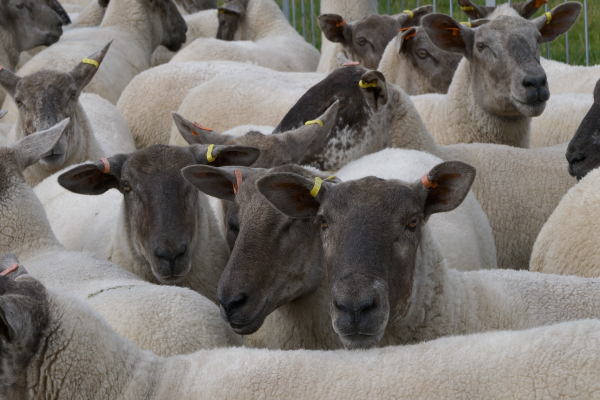
Remember there’s still time to make use of funding through the Preparing for Sustainable Farming (PSF) Animal Health & Welfare options to fertility test bulls, investigate calf pneumonia, screen for sheep scab or iceberg diseases in your flock, assess flock lameness, and complete faecal egg counts for worms and fluke in cattle or sheep.
A review of this was produced in the Spring 2023 edition https://www.fas.scot/article/new-entrants-news-spring-2023-preparing-for-sustainable-farming-psf-animal-health-welfare-options/ and full details can be found on Rural Payments and Services https://www.ruralpayments.org/topics/all-schemes/preparing-for-sustainable-farming--psf-/preparing-for-sustainable-farming--psf--full-guidance/
South West
By Kirstyn Blackwood, South West group facilitator
Contact: Kirstyn.Blackwood@sac.co.uk
The first FAS South West Region New Entrants meeting of the year was held on 16th August at Orchardton Farm, Ochiltree, Ayrshire. The meeting was focused on Selecting Finished Lambs and a Butchery Demonstration. We had an excellent turnout of 28 attendees who were a mixture of new entrants and people from more established farm businesses.
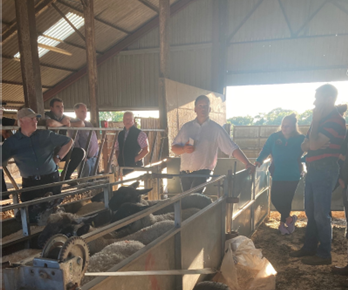
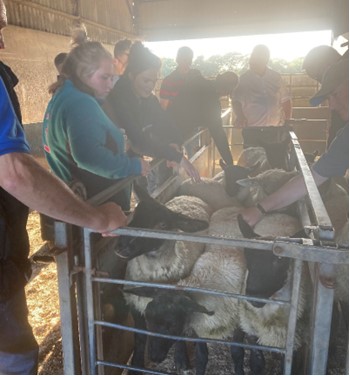
Host farmer James Nisbet and Wallet Marts' John Smith demonstrated how to draw finish lambs, correctly for selling. There were 3 pens of different breeds, Texel, Suffolk, and Mule lambs for people to get practical experience handling the lambs to gauge if they are ready to sell. John and James intentionally selected lambs that are a variety of weights and grades, and marker sprayed them as to what John predicted their grades to be once slaughtered. John explained how important it is to feel the lamb's backs and tails for fat cover before selling them and not just to go by their weight on the scales. John spoke about the EUROP grading system and the grades he predicted for the lambs in the pens for confirmation and fat class. There was also discussion on selling store versus finished and selling direct to abattoir versus through the livestock market.
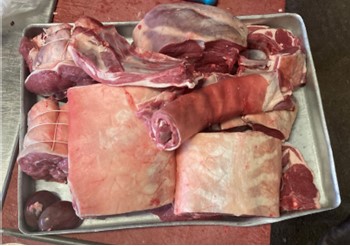
The second demonstration of the evening was carried out by James’ father, Jim Nisbet of J M Nisbet Butchers. Jim brought a lamb carcass which was 25 kg and graded U3L. His butchery demonstration showed off this skilled work and showed the amount of meat you get off a well finished lamb, the different cuts of meat, and the waste which is not sold for human consumption. It was interesting to watch Jim butcher the lamb and talk through the different cuts and value of the meat for selling.
It was great for attendees to see and handle the lambs prior to slaughter and then seeing a carcass being butchered into the end product of what they would cook in their homes.
For more information on selecting finished lambs including the EUROP grading system please follow this link: https://www.fas.scot/downloads/better-returns-programme-marketing-prime-lamb-manual/ and to watch a butchery demo see this video.
Sign up to the FAS newsletter
Receive updates on news, events and publications from Scotland’s Farm Advisory Service

